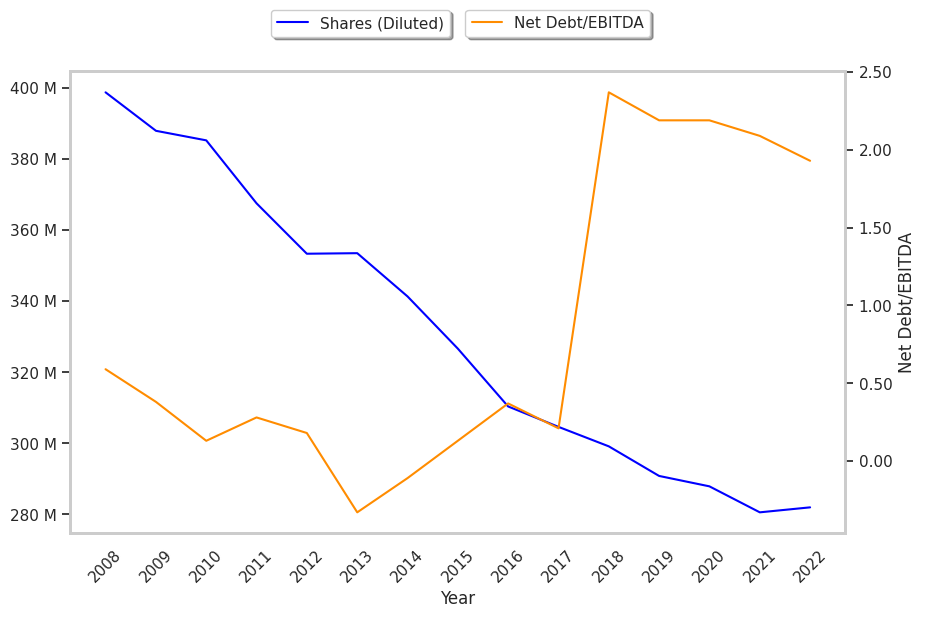One of Wall Street's biggest winners of the day is General Dynamics, a marine shipping company whose shares have climbed 9.1% to a price of $239.9 -- 9.38% below its average analyst target price of $264.74.
The average analyst rating for the stock is buy. GD may have outstripped the S&P 500 index by 9.0% so far today, but it has lagged behind the index by 13.0% over the last year, returning 7.0%.
General Dynamics Corporation operates as an aerospace and defense company worldwide. The company is part of the industrials sector, which is considered cyclical. This means that sales revenues, and to some extent share prices, tend to increase during economic booms and then fall back to earth during busts. However, industrial companies can dampen this cyclical effect if they are invovled in multiple industries.
General Dynamics's trailing 12 month P/E ratio is 19.7, based on its trailing EPS of $12.18. The company has a forward P/E ratio of 16.1 according to its forward EPS of $14.92 -- which is an estimate of what its earnings will look like in the next quarter.
The P/E ratio is the company's share price divided by its earnings per share. In other words, it represents how much investors are willing to spend for each dollar of the company's earnings (revenues minus the cost of goods sold, taxes, and overhead). As of the first quarter of 2023, the industrials sector has an average P/E ratio of 20.49, and the average for the S&P 500 is 15.97.
We can take the price to earnings analysis one step further by dividing the P/E ratio by the company’s projected five-year growth rate, which gives us its Price to Earnings Growth, or PEG ratio. This ratio is important because it allows us to identify companies that have a low price to earnings ratio because of low growth expectations, or conversely, companies with high P/E ratios because growth is expected to take off.
General Dynamics's PEG ratio of 1.59 indicates that its P/E ratio is fair compared to its projected earnings growth. In other words, the company’s valuation accurately reflects its estimated growth potential. The caveat, however, is that these growth estimates could turn out to be inaccurate.
To better understand the strength of General Dynamics's business, we can analyse its gross profits, which are its revenues minus its cost of goods sold only. The extent of gross profit margins implies how much freedom the company has in setting the prices of its products. A wider gross profit margin indicates that a company may have a competitive advantage, as it is free to keep its product prices high relative to their cost.
GD's gross profit margins have averaged 17.8% over the last four years. While not particularly impressive, this level of margin at least indicates that the basic business model of the company is consistently profitable. These margins are declining based on their four year average gross profit growth rate of -0.2%.
General Dynamics's financial viability can also be assessed through a review of its free cash flow trends. Free cash flow refers to the company's operating cash flows minus its capital expenditures, which are expenses related to the maintenance of fixed assets such as land, infrastructure, and equipment. Over the last four years, the trends have been as follows:
| Date Reported | Cash Flow from Operations ($ k) | Capital expenditures ($ k) | Free Cash Flow ($ k) | YoY Growth (%) |
|---|---|---|---|---|
| 2023-02-07 | 4,579,000 | -1,114,000 | 5,693,000 | 10.37 |
| 2022-02-09 | 4,271,000 | -887,000 | 5,158,000 | 6.9 |
| 2021-02-09 | 3,858,000 | -967,000 | 4,825,000 | 21.6 |
| 2020-02-10 | 2,981,000 | -987,000 | 3,968,000 | 21.87 |
| 2019-02-13 | 3,128,000 | -128,000 | 3,256,000 | -22.73 |
| 2018-02-12 | 3,836,000 | -378,000 | 4,214,000 |
- Average free cash flow: $4.52 Billion
- Average free cash flown growth rate: 0.0 %
- Coefficient of variability (lower numbers indicating more stability): 13891131520.3 %
With its positive cash flow, the company can not only re-invest in its business, it can offer regular returns to its equity investors in the form of dividends. Over the last 12 months, investors in GD have received an annualized dividend yield of 2.3% on their capital.
Value investors often analyze stocks through the lens of its Price to Book (P/B) Ratio (market value divided by book value). The book value refers to the present value of the company if the company were to sell off all of its assets and pay all of its debts today - a number whose value may differ significantly depending on the accounting method.
General Dynamics has a P/B ratio of 3.36. This indicates that the market value of the company exceeds its book value by a factor of more than 3, but is still below the average P/B ratio of the Industrials sector, which stood at 3.78 as of the first quarter of 2023.
General Dynamics is by most measures fairly valued because it has an average P/E ratio, an average P/B ratio, and a pattern of improving cash flows with a flat trend. The stock has poor growth indicators because it has a an inflated PEG ratio and weak operating margings with a stable trend. We hope you enjoyed this overview of GD's fundamentals.



